So, you watched some YouTube videos and said to yourself, “Hey, this drywall stuff seems pretty straightforward—I know how to cut drywall. I know how to patch drywall. I should be able to install it.” Wrong! Just because the YouTube video is only 3 minutes long doesn’t mean there isn’t a whole lot more to it, and trust us, we’ve seen plenty of folks cut corners or overlook details that can make a world of difference. We don’t care if you’re new to the game or you’ve been swinging hammers for years—these are the mistakes that separate professional jobs from patchy DIY projects. Let’s hang some boards.
1. Skipping the Prep Work
- Mistake: Jumping straight into hanging drywall sheets without checking for proper framing, alignment, or obstructions is a huge no no.
- How to Avoid It: Always inspect the framing and layout first. These early preparations will save you hours later fixing gaps, bulges, or uneven walls.
- Robey Drywall Approach: We prep hard so we can finish easy. You want a job done right? Start with a solid foundation.
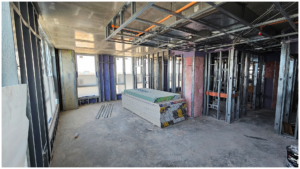
2. Poor Screw and Fastener Placement
- Mistake: Misplacing screws—either too few, too many, or in the wrong spots—leading to popped screws, cracks, and unstable sheets.
- How to Avoid It: Follow the correct spacing guidelines (16 inches on center for walls, 12 inches for ceilings) and ensure screws are flush without breaking the paper.
- Robey Drywall Approach: We don’t play the guessing game. Our team knows exactly where those fasteners need to go, and we stick to the plan.
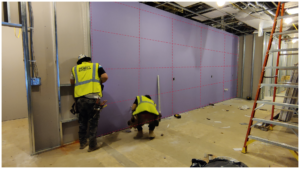
3. Over-Sanding Joints
- Mistake: Going too hard/aggressive with the sanding, resulting in dips, uneven surfaces, exposed and/or torn tape or paper.
- How to Avoid It: Smooth, easy and consistent sanding. Use a light touch and check your work as you go. Remember, you’re looking for smooth—not disappearing into the wall.
- Robey Drywall Approach: You’re not digging a trench; you’re finishing a wall. Less is more—except when it comes to experience.

4. Neglecting to Stagger Joints
- Mistake: Lining up joints too close together or in predictable patterns, leading to weak spots and visible seams.
- How to Avoid It: Stagger vertical seams and avoid creating a grid pattern. It’s all about balance and reducing stress points.
- Robey Drywall Approach: Unlike many DIY projects, we lay it out like a chessboard. It’s all about strategy. You can’t win if you don’t think a few moves ahead.
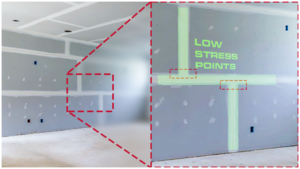
5. Improper Taping Techniques
- Mistake: Working with the wrong type of tape/paper and failing to embed it correctly means poor adhesion to the wall leading to cracks and bubbles.
- How to Avoid It: Use the proper tape/tape for the job, and make sure it’s fully embedded in joint compound correctly. Fiberglass tape has its place, but it’s not everywhere.
- Robey Drywall Approach: We don’t just slap tape and hope for the best. Every line’s got to be tight, clean, and ready to last.

6. Rushing the Mudding Process
- Mistake: Applying too much mud, too quickly, or not allowing proper drying times between coats. DIY projects often take an approach in which the person applying mud uses an abundance “just to be sure.”
- How to Avoid It: Apply thin, even coats of mud and let it fully dry before any sanding or applying additional layers. Rushing leads to bubbles, ridges, and extra work.
- Robey Drywall Approach: We’re patient when we have to be. There’s a difference between moving fast and doing it right.
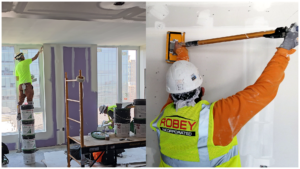
7. Use the Right Tools for the Job
- Mistake: Using taping knives that are too big or small or sanding sponges instead of blocks.
- How to Avoid It: Don’t start behind the 8-ball! Equip yourself with the right tools. It will be the difference in the finish quality, speed, and consistency.
- Robey Drywall Approach: We work smarter, not harder. We use the correct tools for the job to obtain the quality our clients expect from us.

8. Address Moisture and Humidity Issues
- Mistake: This is one we’ve noticed many DIY projects fail to address. Not installing the proper drywall in damp environments or considering moisture control will result in mold and warping. Everytime.
- How to Avoid It: Ask yourself “Is this a bathroom, kitchen, or basement?” If the answer is ‘Yes’ then use moisture-resistant drywall and make sure there’s proper ventilation.
- Robey Drywall Approach: We don’t set ourselves—or our clients—up for failure. A few extra steps now keep us out of trouble later.
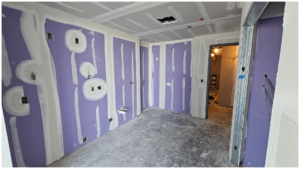
9. Ignoring the Importance of Acoustics in your Space
- Mistake: Overlooking how the acoustics in a space will sound and travel, especially in commercial, medical, or multi-unit residential buildings.
- How to Avoid It: Use insulation, sound-dampening drywall and proper sealing techniques in spaces where sound control is crucial.
- Robey Drywall Approach: It’s more than just a space—it’s about what you don’t want to hear outside of them. If you’re gonna do it, make it silent.
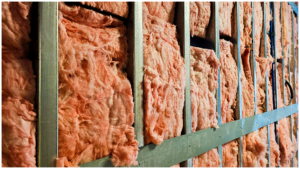
10. Don’t Skip the Final Inspection
- Mistake: Skipping a thorough final walk-through or inspection before painting and finishing to speed up project timeline.
- How to Avoid It: Be thorough and vigilant when checking for any flaws that could show up later. Inspect the job from multiple angles and at different times of the day.
- Robey Drywall Approach: We inspect it like it’s our name on the line—because it is. One last look is what separates the good enough from the great.
Conclusion:
There you go—10 mistakes we see first timers and seasoned contracts make all too often. Sure, DIY projects can work out. But if you want to make sure everything is done right, the professionals know how to make that happen. We believe that drywall work is as much an art as it is a skill, and like any craft, it takes experience and attention to detail.
You can always cut corners and cross your fingers that it comes out good enough, or you can do it right the first time. At Robey Drywall, we’ve been through the trenches, learned the hard lessons, and made it our mission to get it done right the first time. We know how to cut drywall and install it with expertise. We also know how to patch drywall when fixes become necessary.



